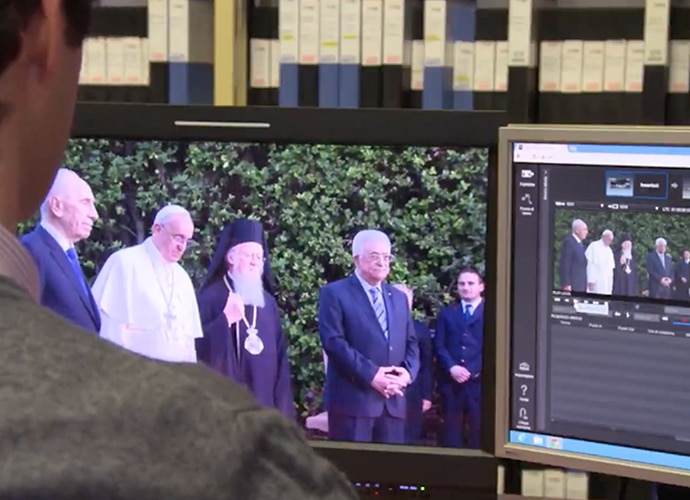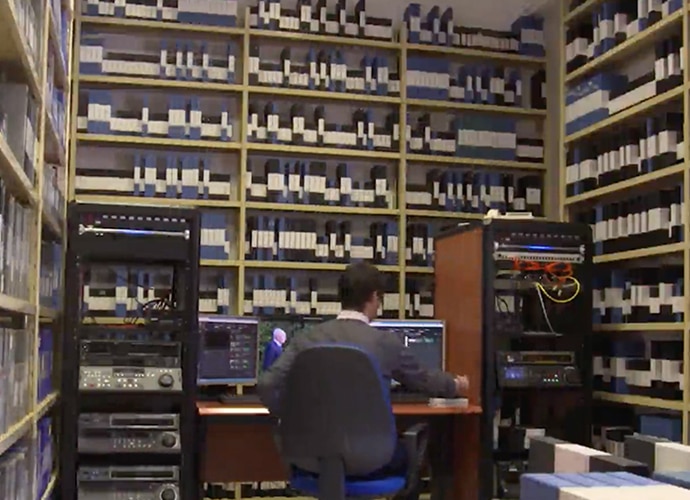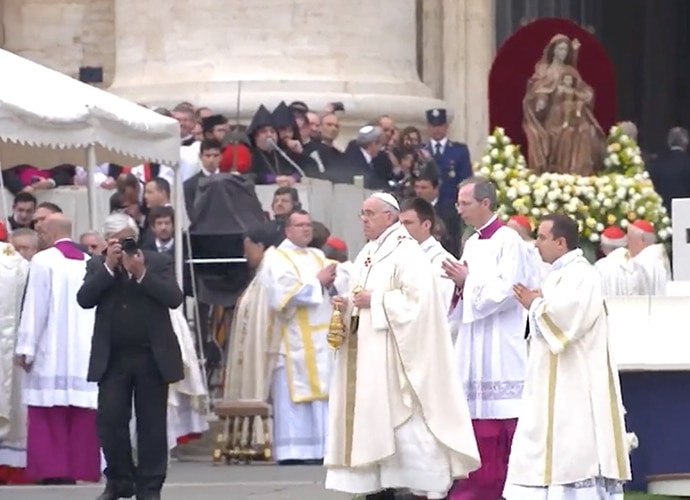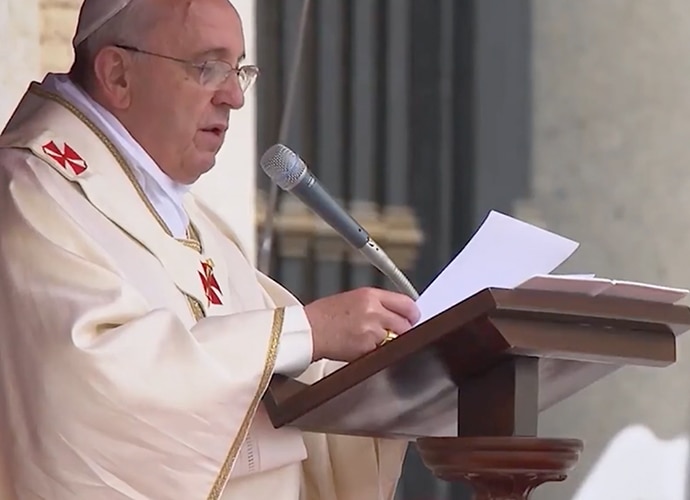Vatican preserves priceless video archive with Optical Disc Archive
Sony’s rugged Optical Disc Archive technology is helping make over 10,000 hours of irreplaceable recordings readily accessible, while safeguarding the Vatican’s unique video library for the long term.

- Vatican required a tapeless storage solution for irreplaceable video archive representing over 10,000 hours of content
- Needed a high capacity, dependable long-term solution for digitizing current media assets
- Optical Disc Archive stores over 1 TB per cartridge
- Library managed using the Sony Media Backbone Conductor workflow orchestration platform
- Archive stores new 4K footage as well as legacy assets
- Migration to Optical Disc Archive allows near real-time access to archived video assets
- Resilient ODA storage media resists humidity and temperature changes
- No need for dedicated air conditioning systems
Contact us for more information
It's thanks to this technology that we will be able to preserve such extraordinary historic documents—in a small storage space, for a long time and without the need for sophisticated facilities.
Dario Eduardo Viganò
Director General, CTV.
Documenting the activities of the Catholic Church
Established by Pope John Paul II in 1983, Centro Televisivo Vaticano (CTV)—now renamed Vatican Media—is the Vatican’s own television production center. Documenting the activities of the Holy Father and the government of the Roman Catholic Church, it brings religious events into the homes of millions of people across the world via its own programs and content that’s provided to other broadcasters. CTV has amassed over 10,000 hours of material that are stored on more than 20,000 media of various kinds including U-matic tape and other formats.


Seeking a dependable tapeless archive solution
As part of a major project to digitize the Vatican’s extensive records, CTV was keen to move toward tapeless storage of its video assets. “At this point it’s necessary for us to find a way of preserving all this material, sheltering it from such damaging factors as humidity, abrupt changes in temperature and other stresses,” says Dario Eduardo Viganò, Director General, CTV. “Above all it is important for us to make it readily available in a flexible and functional manner to future scholars, who will no longer study parchments or papal bulls but audio-visual records.”
After evaluating various solutions on the market, CTV chose to invest in a long-term storage solution is based on Optical Disc Archive (ODA) library technology, combined with Sony’s Media Backbone Conductor (MBC) integration and workflow orchestration platform.
Unaffected by time, humidity or temperature
“This is the only medium that will give us peace of mind for fifty years, which is the amount of time for which the storage capacity of these optical discs is guaranteed,” notes Msgr. Viganò. “Moreover they are resilient and not affected by humidity or temperature changes, which means that they do not need to be in a facility equipped with sophisticated air conditioning systems.”


Safeguarding the future of previous video content
The first stage of the project has seen CTV working with third-party suppliers to renew its master control room. This has been followed by CTV creating a fully digital version of its existing video archive, transferring existing tapes to ODA cartridges that can each hold over a terabyte of data. Thanks to the stability and durability of ODA cartridges, the Vatican’s precious video footage will be safe yet easily accessible for years to come.
Every detail of historic events beautifully preserved
“A reliable archive is important,” states Msgr. Viganò. “I’m thinking of the many great international events we have organized, like the canonization of Pope John XXIII and Pope John Paul II that was also filmed in 4K. We have the possibility of preserving these remarkable assets for the scholars of the future.
“The very high definition of these images is simply amazing,” Msgr. Viganò confirms. “You can see the minute details of all the hundreds of thousands of people gathered in St Peter’s Square. It is something really extraordinary, beautiful and very useful. It’s thanks to this technology that we will be able to preserve such extraordinary historic documents—in a small storage space, for a long time and without the need for sophisticated facilities.”








